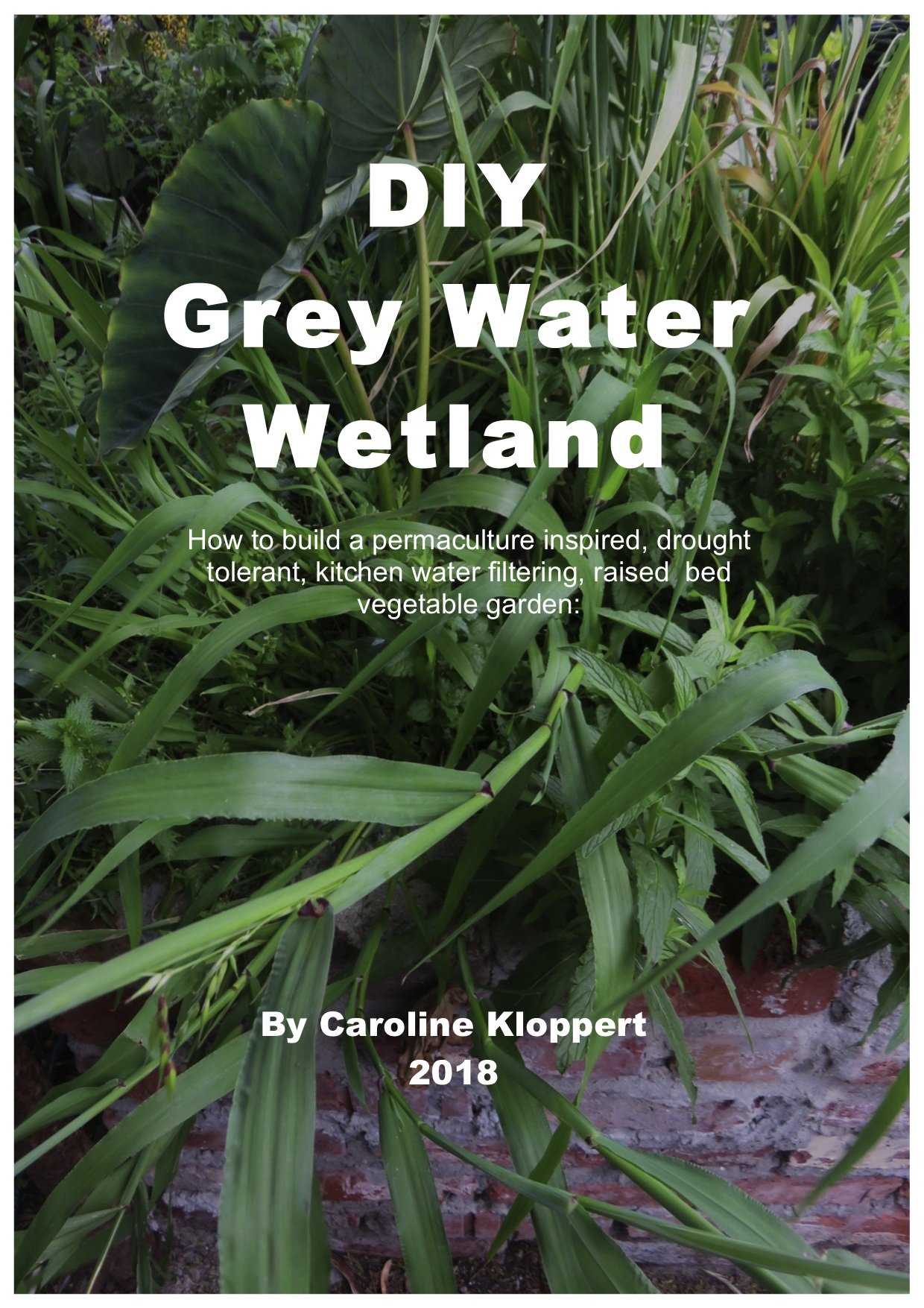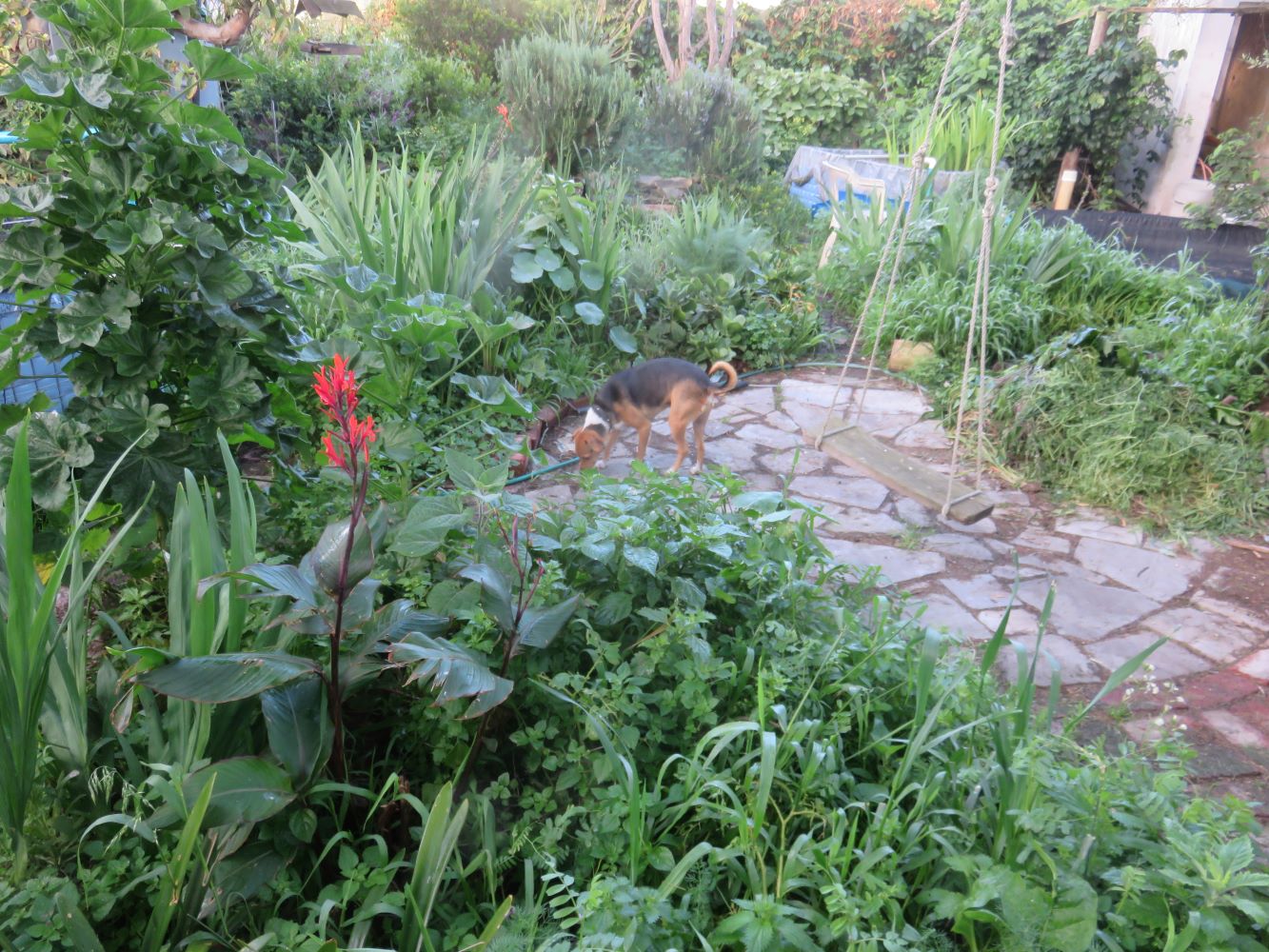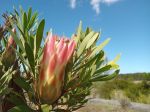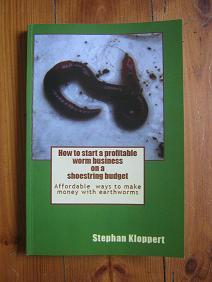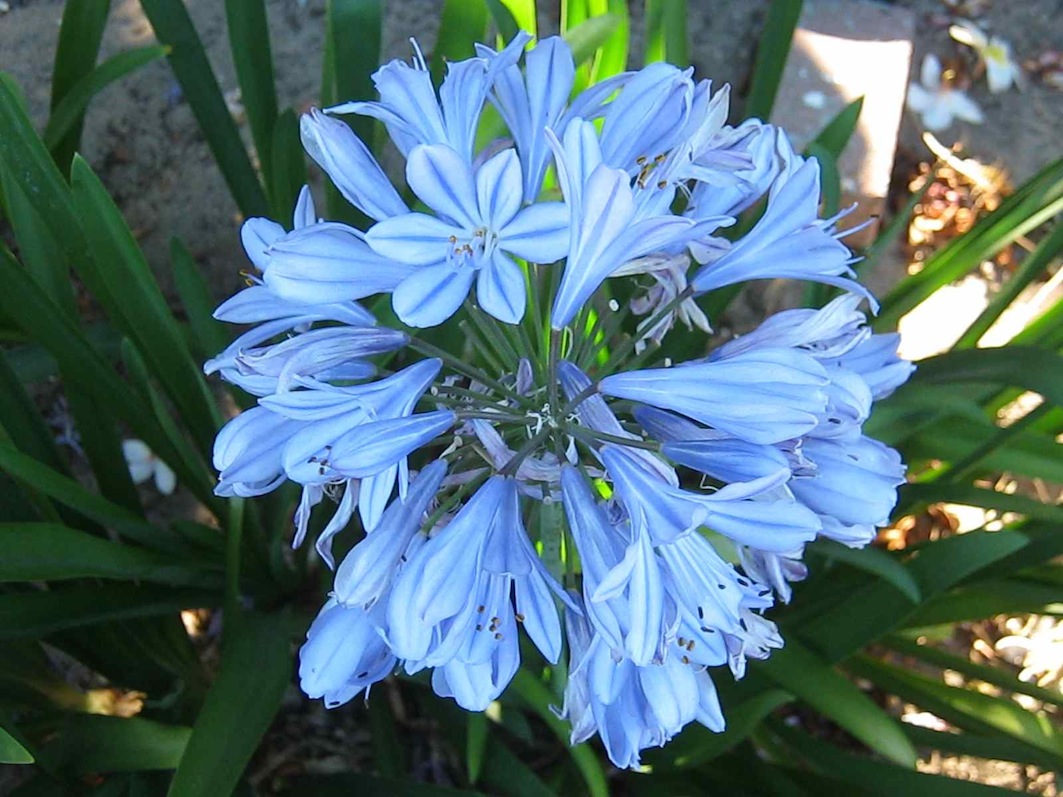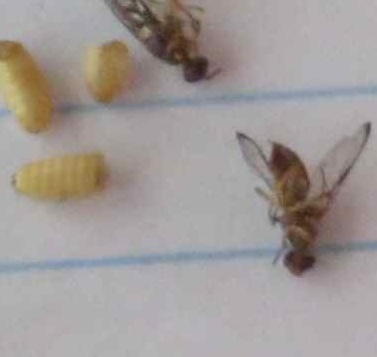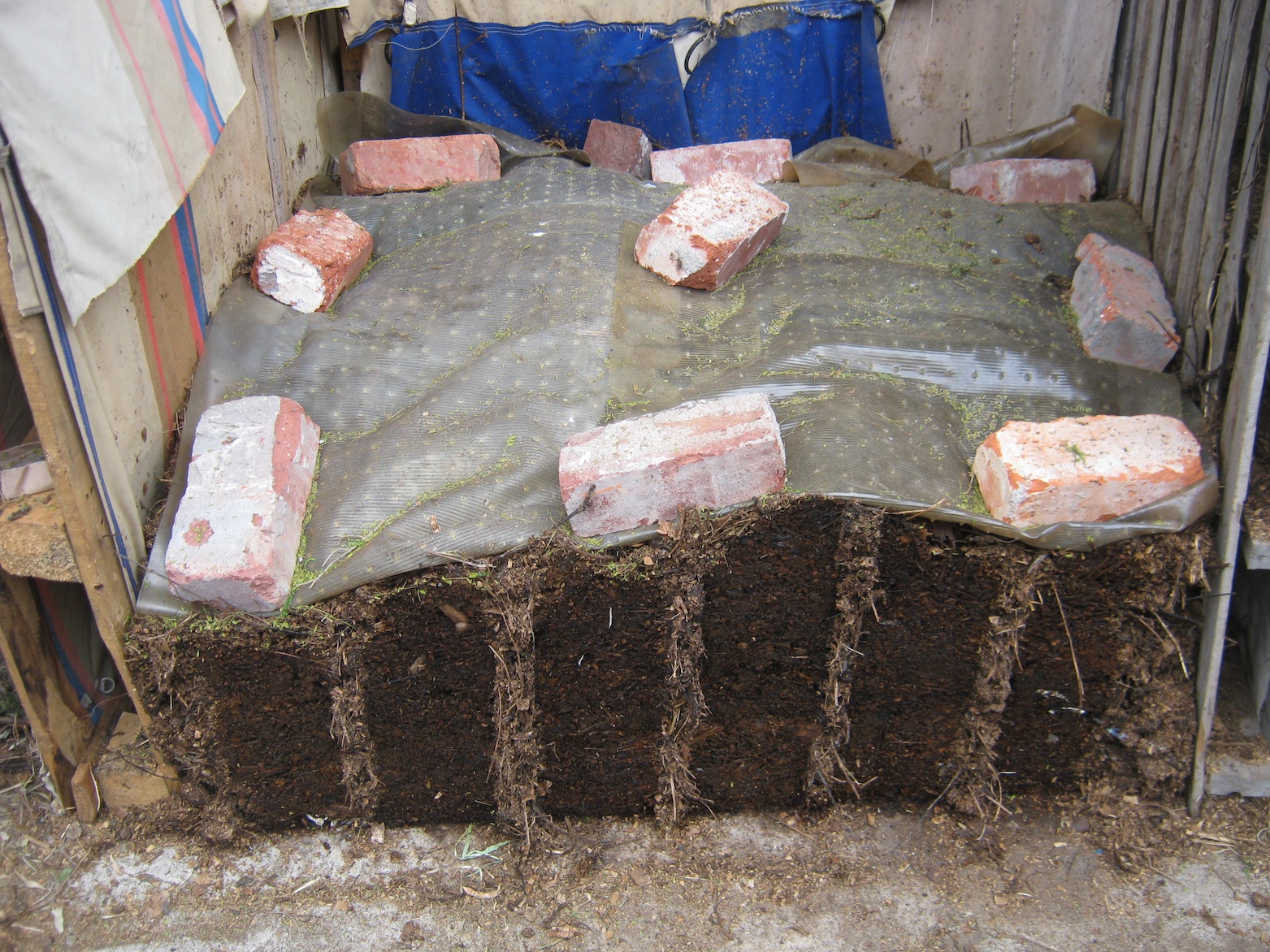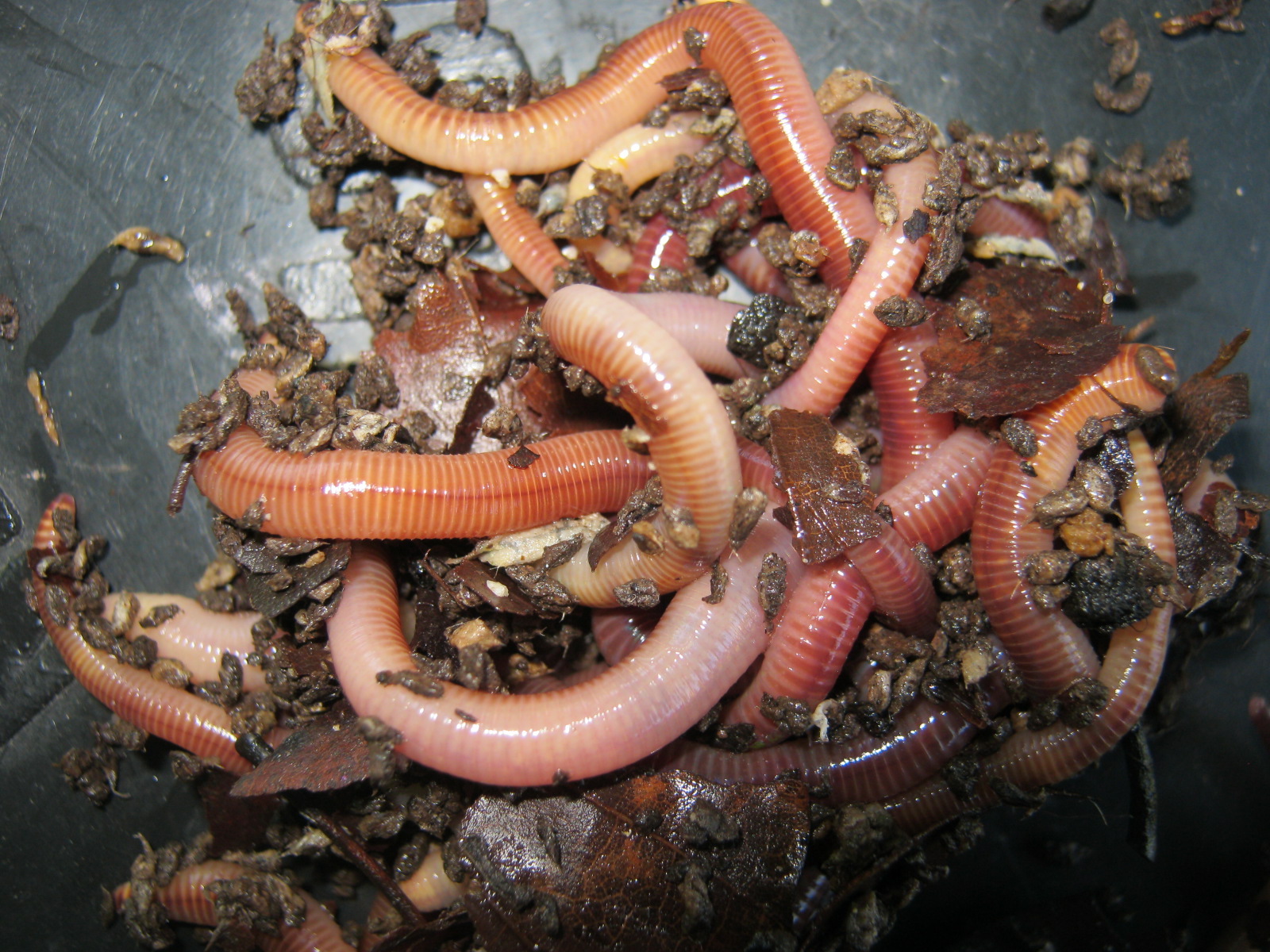Dear Reader, in this age of AI created content, please support with your goodwill someone who works harder to provide the human-made. Sign up in the righthand column or bottom of this page. You will receive my hand illustrated monthly newsletter RESTORE NATURE and access to the biodiversity garden design course as I write...and nothing else, I respect your time.
an exploration of
Cape Flats Sand Fynbos
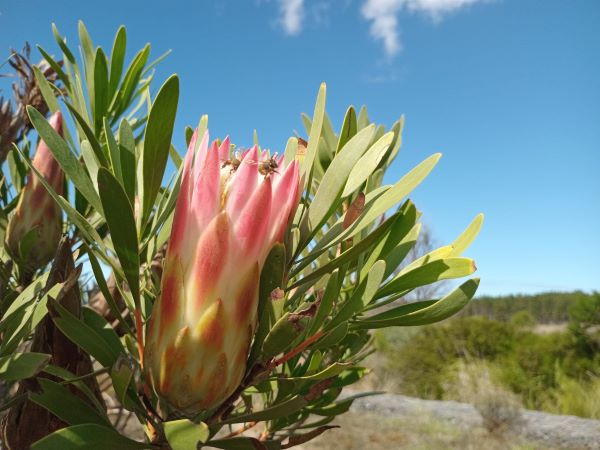 The sweet heart of Cape Flats Sand Fynbos, the sugarbush, once plundered by hungry humans, here plundered by bees.
The sweet heart of Cape Flats Sand Fynbos, the sugarbush, once plundered by hungry humans, here plundered by bees.What is Cape Flats Sand Fynbos ?
It is a vegetation type that consists of dense shrubland in which Proteas and Restios dominate. In wetter areas there are more Ericas, and in drier more Asteraceae. It is rich in Legumes. There are wetlands in winter in depressions, though those which remain are rare, and bulbs which flower in spring. Other related veld types are Atlantis Sand Fynbos and Hangklip Sand Fynbos (Reference 1).
Where is the Cape Flats Sand Fynbos found ?
The Cape Flats Sand Fynbos is a vegetation type endemic to the city of Cape Town, South Africa. It is critically endangered and occurs only within the city limits. It is found on the Cape flats (Reference 2), which is the flat land framed by the mountains surrounding Cape town.
To me its previous historical distribution forms a giant X or an H with a short horizontal on the map. It extends from the Blaauwberg and Koeberg hills in the north to Lakeside in the south near False Bay, on the two western arms, and from Durbanville to Macassar in the south on the two eastern arms, crossing or having its short horizontal in the area of Belleville to Joostenberg (Reference 3).
The vegetation type is determined by the soil, and is found on deep, regic, or acid sands of Tertiary origin, on flat to undulating terrain at low elevations of 20 to 200m (Rebello et al 2006 in Reference 3). The sands are grey or white and typical of the sand fynbos in the region.
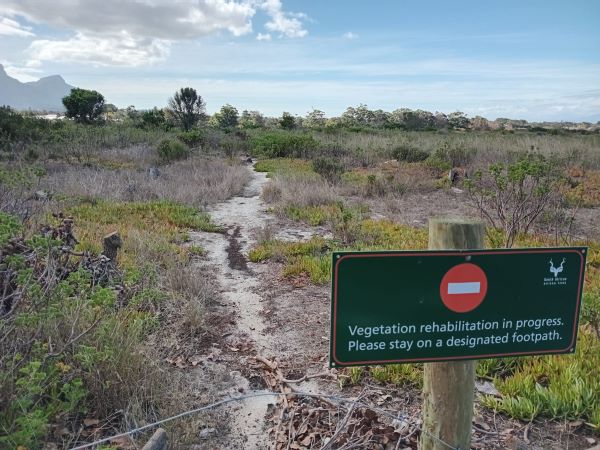 Here a forbidden path in the Tokai restoration area, in which one can see the typical dirty grey sands which the Cape Flats Sand Fynbos loves.
Here a forbidden path in the Tokai restoration area, in which one can see the typical dirty grey sands which the Cape Flats Sand Fynbos loves.The Cape Flats Sand Fynbos is also called Acid Sand Fynbos. Where the sand has remained more alkaline the vegetation found is Strandveld (Reference 1), which one could translate as 'beach vegetation'. One often finds the Strandveld closer to the sea, as shell fragments can increase the pH.
One could ask why the sands are acidic when many kinds of sea sand are alkaline. The Cape sands originate from slow erosion of Table Mountain and the surrounding mountains, and cover a base of shale that emerges here and there on high ridges (Reference 16). These soils on which CFSF thrives are called Podzols, sandy soils developing from quartzite or sandstone in high rainfall areas. The parent rock, mainly sandstone, can produce acid soils with a pH as low as 3.5. Sandy soils contain only a tiny fraction of bases compared to clay due to leaching, and thus have a scarcity of base cations such as Ca, Mg and K that could increase the pH. These soils also have a low cation exchange capacity and poor pH buffering. The acidity and drenching rain at the Cape has dissolved the last remnants of seashells in the windblown sand on the interior of the flats between the mountains. Characteristically for podzols, the organic material leaches down and accumulates lower in the soil profile where the humus binds with iron and aluminium to form metal-humus complexes. They have a tendency to compaction and low water retention (Reference 10).
Thus we can see multiple factors contributing to the acidity and low nutrient status of the Cape Flats sands. This causes problems for farmers and gardeners like myself who wish to provide for the table. However the local vegetation has evolved to cope with these conditions over millennia (Stock and Allsop 1992 mentioned in Reference 3). Too much fertility and adjustment of the soil pH will cause some native plants to die.
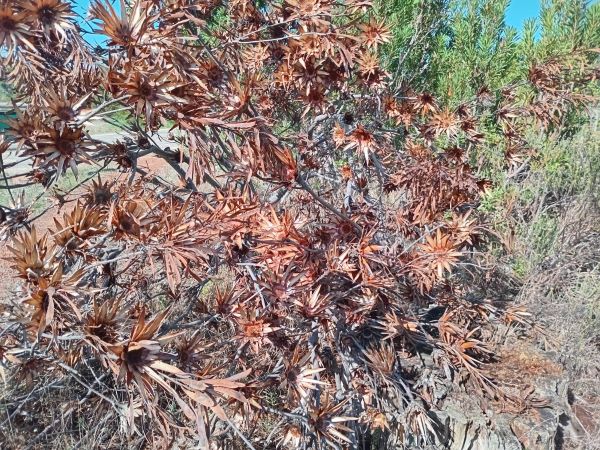 A protea bush with open empty seed heads. The seed was probably shed during the fire that turned it bronze and gold.
A protea bush with open empty seed heads. The seed was probably shed during the fire that turned it bronze and gold.Fynbos developed some characteristics in response to low nutrient soils at the Cape. It has sclerophyllous or hard, leathery leaves with high concentrations of fibre. There are low nutrient concentrations in the leaves and flowers and high concentrations of phenolic compounds. Special mechanisms for taking up nutrients are common such as mat like cluster or Proteoid roots close to the surface and symbiotic relationships with mycorrhiza. They also have a high proportion of root to shoot mass. High rates of nitrogen and phosphorus recycling from their leaves on the plant is supported by evergreen foliage with slow leaf turnover and slow formation of leaf litter and decomposition (Reference 3). Low rates of herbivory due to phenols and high rates of nectivory to consume excess sugar by mammals and birds are consequences of the plant's mechanisms to reduce toxic levels of metabolites from photosynthesizing in strong sun and drought. Many other interesting characteristics of dry climate plants the majority of which are also found in the Fynbos or Karoo plants can be found in another article I wrote based on the work of the Mediterranean gardener Heidi Gildemeister.
The high fibre, phenols and seasonal drought act together to make Fynbos fire prone, usually burning every 5 to 50 years. This has influenced the evolution of Fynbos plants (Bond and van Wilgen 1996 mentioned in Reference 3) equipping them for resprouting after fire, obligate seeding (can only regenerate after fire and from seed), serotinous seedbanks (seeds stored in the canopy not in the ground seedbank), myrmecochory (seed dispersal by ants), heat and smoke stimulated germination, pyrogenic flower production (peak in flower production after fire), and post fire seedling recruitment (Le Maitre and Midgley 1992 mentioned in Reference 3). Differences in the fires heat and season will favor different plants and affect the composition of the community.
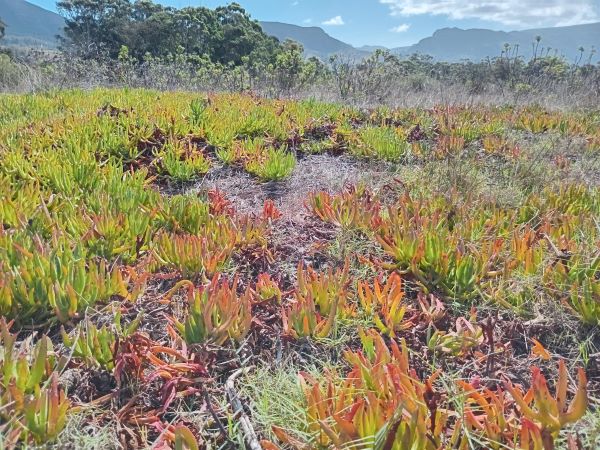 Carpobrotus edulis ? reddened by the heat of the sun that shrivels its delicious salty fruit. Part of local cuisine. A pest on other continents here it is restrained by all who feed off it.
Carpobrotus edulis ? reddened by the heat of the sun that shrivels its delicious salty fruit. Part of local cuisine. A pest on other continents here it is restrained by all who feed off it.The climate of Cape Flats Sand Fynbos' home has a dry and temperate climate receiving a mean average rainfall of 580-980mm (Reference 3). The Cape Flats Sand Fynbos is the wettest and coolest of the Sand Fynbos types on the west coast of South Africa. Frost is extremely rare, maximum three times a year (Reference 3) but I've never seen it myself and I've lived in Cape Town for most of my 65 years. In addition to heavy rain in winter, mist is common (Reference 1). In summer between November and March the average is less than 10mm a month. Mean summer temperatures are 27 degrees C and winter 7 degrees C (Reference 3).
Some plants found in
Cape Flats Sand Fynbos
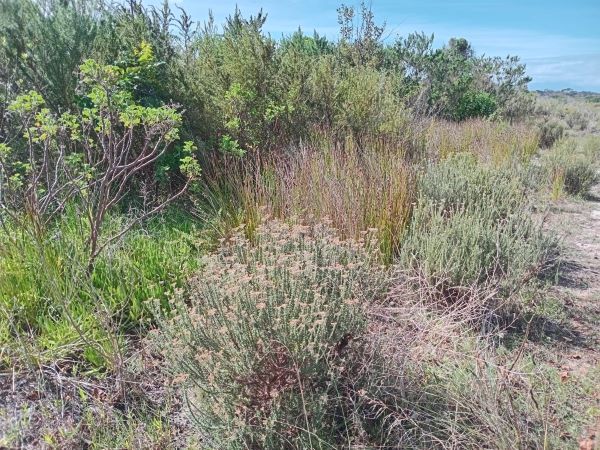 Some of the backbone plants of the Cape Flats Sand Fynbos seen here: Pelargonium, Restios, Metalasia. Helichrysum and Carpobrotus
Some of the backbone plants of the Cape Flats Sand Fynbos seen here: Pelargonium, Restios, Metalasia. Helichrysum and CarpobrotusEndemic taxa (Reference 1)
Aspalathus variegata (extinct)
Athanasia captitata
Cliffortia ericifolia
Erica margaritacea
W. pyramidalis (extinct)
E. turgida (extinct in the wild)
E. verticilliata (exinct in the wild)
Ixia versicolor
Lampranthus stenus
Leucododendron levisanus (extinct)
Liparia graminifolia (probably exinct (2))
Serruria aemula (critically endangered) (2)
S. foeniculacea
S. furcellata
Tetraria variabilis
Trianoptiles solitaria
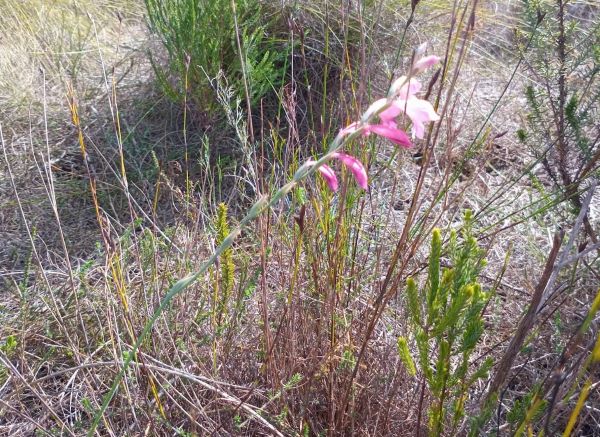 A wild gladiolus ? each flower the size of a fingernail. Smaller wild versions are the ancestors of huge showy garden favorites worldwide.
A wild gladiolus ? each flower the size of a fingernail. Smaller wild versions are the ancestors of huge showy garden favorites worldwide.Taxa found in Cape Flats Sand Fynbos and elsewhere (Reference 3)
Berkheya rigida
Carpobrotus acinaciformis
Conyza pinnatifida
Corvus albicus
Cynodon dactylon (introduced)
Diastella proteoides
Diosma hirsuta
Dipogon lignosis
Edmondia sesamoides
Ehrharta villosa var. villosa
Elegia tectorum
Erica lasciva
Erica mucosa
Helichrysum tinctum
Indigofera procumbens
Knowltonia vesicatoria
Metalasia densa
Morella cordifolia
Passerina corombosa
Phylica cephalantha
Prinia maculosa
Protea burchellii
Protea repens
Psoralea pinnata
Pterocelastrus tricuspidatus
Restion quinquefarius
Rhus lucida
Senecio halimfolius
Serruria aemula
Serruria glomerata
Sporobolis virginicus
Stoebe plumosa
Streptopelia capicola
Thamnocortus erectus
Wachendorfia paniculata
Watsonia meriana
Wiborgia obcordata
Wildenowia incurvata
Zantedeschia aethiopica
Zosterops virens
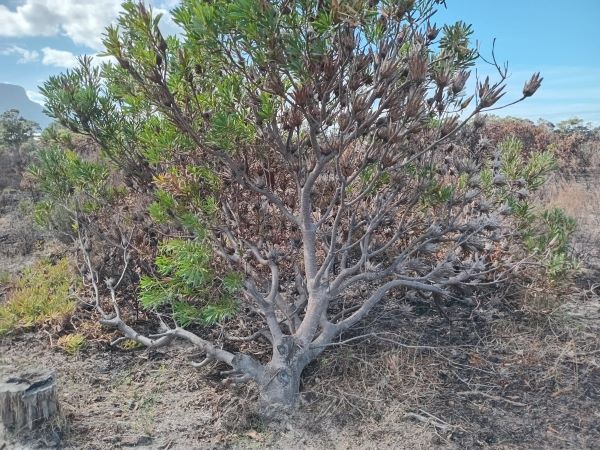 A beautifully formed Protea repens bush, scorched by a cool fire and resprouting fresh green.
A beautifully formed Protea repens bush, scorched by a cool fire and resprouting fresh green.Nectar rich plants (Reference 2)
Albuca juncifolia (easy to grow)
Erica mammosa
Erica vertcilliata (easy to grow)
Lachenalia reflexa (easy to grow)
Leucospermum concarpodendron
Protea burchellii
Protea repens (easy to grow)
Salvia lanceolata
Watsonia meriana
Medicinals (Reference 2)
Aristea africana
Carpobrotus edulis (easy to grow)
Morella quercifolia
Osteospermum monoliferum (easy to grow)
Pelargonium betulinum (easy to grow)
P. capitatum (easy to grow)
P. cucullatum (easy to grow)
Protea repens (easy to gow)
Zantedeschia aethiopica
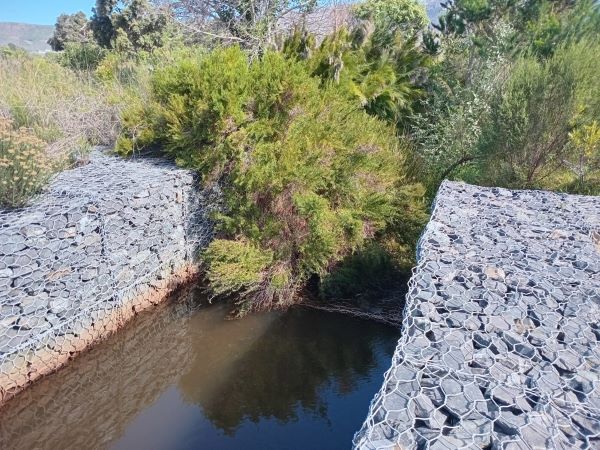 Tall, dense vegetation on the river banks in Tokai Restoration area.
Tall, dense vegetation on the river banks in Tokai Restoration area.The history of Cape Flats Sand Fynbos
Cape Flats Sand Fynbos was once the most ubiquitous veld type at the Cape. The old roads would travel along the edge of the sandy areas of the Cape Flats, and travelers would avoid passing through the sand as cart wheels would get stuck in the sand or the seasonal wetlands in winter . (Reference 1). Likewise the Khoekhoe herders on their migrations of the past would hasten through its entrapping sands with their cattle, but for another even more dangerous reason. Dallying too long in its low nutrient scrub would produce deficiency diseases in the beasts they relied on.
The vegetation type does suffer from a sort of stigma and historic disregard. Most of the bush cover, described in dismissive terms by van Riebeek, the firsty governor of the Dutch settlement, was harvested for firewood soon after he arrived. Without their cover, the sands began to move and Australian wattles were introduced to settle the dunes. These soon became a threat to the indigenous vegetation growing there.
Many people now believe the Cape flats had no native trees, but as can be seen at Tokai, the bush can be quite tall and there are some trees along the rivers, and my 95 year old mother remembers the seasonal wetlands at Olieboom sandmyn had forested banks. So though the majority of the Cape Flats was covered in scrubby shrubs and low vegetation, there were some trees where it was wet. Since then the majority of the erstwhile CFSF has gone under the tractor wheels during the city's expansion and the trees have been felled.
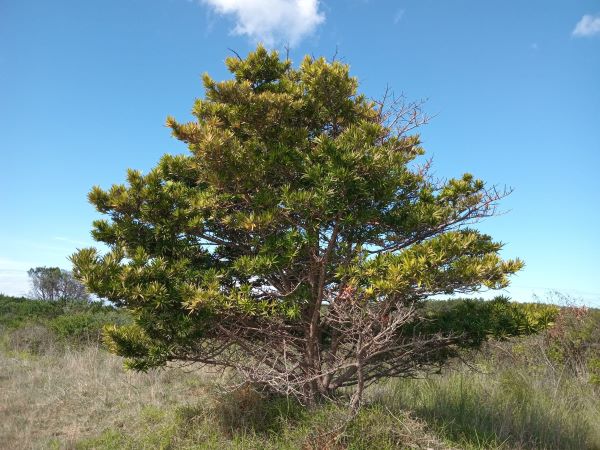 A yellowwood (Podocarpus) on the river bank. Sometimes forest giants, here it is spread out and short in the blazing sunshine.
A yellowwood (Podocarpus) on the river bank. Sometimes forest giants, here it is spread out and short in the blazing sunshine.Threats to Cape Flats Sand Fynbos
There are many threats to the Cape Flats Sand Fynbos. Habitat loss occurs through urban development, a major threat to CFSF (Wood et al 1994 in Reference 3). Poor agricultural practices, mowing, fire prevention (it requires fire for optimum function), dumping are all dangers, but the invasion of alien grasses and other weeds, pines, gums and Acacias such as Port Jackson willow and Rooikranz is the worst threat of all (Rebello et al. 2006 in Reference 3) and climate change is a potential threat. As the vegetation has evolved in low nutrient environments, the pollution of ground water with lawn fertilizers is another threat, as is the lowered water table in the city (Reference 1).
When fire is kept out, the sour fig (Carpobrotus edulis) and bietou (Chrysanthemoides sp.) become dominant and the rich fynbos diversity goes down (Reference 1). I wonder if this accounts for its appearance at Wingfield air base.
The target is to protect 30% of the Cape Flats Sand Fynbos, but only 15% remains. It insludes 108 threatened and 6 species extinct in the wild (Reference 1). Unfortunately, lying on low land suitable for housing, it has fallen prey to the expansion of the city following world war 2. There is now merely 15% of it left and only 5% of that is in a reasonable condition (Reference 1).
Complete collapse of the Cape Flats Sand Fynbos occurs when it is replaced by developed areas. The abundance of exotic species could be a measure of disruption, if more data were available (Reference 3). The fact that CFSF occurs only within the city limits puts it in great danger. 85% of the area it once covered lies under urban sprawl and less than 1% is conserved. It has the highest number of threatened plant species among the types of Sand Fynbos. Half of what remains has been invaded by invasive alien plants like Kikuyu grass, Acacia saligna, A. cyclops, Pinus and Eucalyptus varieties (Reference 4).
It used to cover 500 km2 (Reference 2). The small pockets that remain are too small to preserve this vegetation type, and are also threatened by alien plant invasion and mowing which removes the taller serotinous species that bear their seedbank in the canopy (Reference 4). Apparently the only truly representative patch is on Blaauwberg hill (Reference 1).
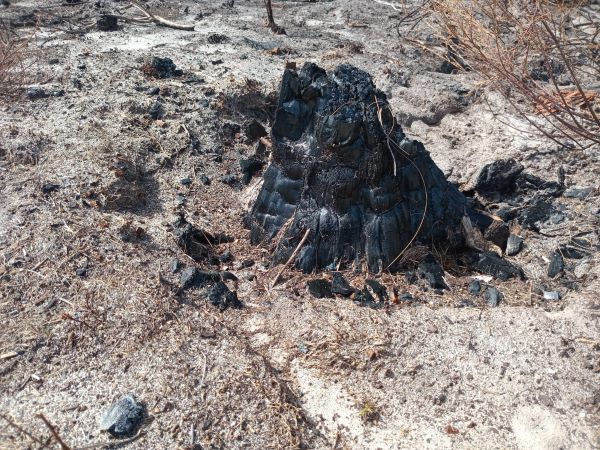 A charred burned out tree, perhaps an alien eucalyptus at Tokai
A charred burned out tree, perhaps an alien eucalyptus at TokaiWhy it is important to conserve
Cape Flats Sand Fynbos
Firstly I believe it should be conserved because it is critically endangered and the most threatened vegetation type in this city lying on top of and expanding over a globally exceptional biodiversity hotspot. Most of Cape Town lies on land it once occupied, and it is thus what we should return to if we want to go back to nature anywhere in the city with any kind of authenticity.
The benefits to man are always listed as reasons to conserve but this argument is a two edged sword. This was covered in my course on biodiversity gardening which is available to subscribers to my newsletter. There are always greater human needs which can undermine any argument which seeks to justify the existence of other species with their usefulness to us. Some of these human centric justifications for preserving the Cape Flats Sand Fynbos are potential horticultural use, and as a wild gene bank for common horticultural plants such as Pelargoniums and Gladioli for doing new breeding. Water retention in the landscape, maintaining the water table and lessening flooding, education, recreation and spiritual renewal as well as new plants medicines, and cullinary herbs and teas are more of these justifications (Reference 1).
 A moot question. Informative signage at Tokai is part of the restoration trail.
A moot question. Informative signage at Tokai is part of the restoration trail.What can communities and gardeners do ?
The city report recommends declaring and conserving areas where CFSF is still found, restoring degraded areas restored with alien removal and reintroduction of fire, and curbing competing land use such as urbanization and alien forest walks (Reference 1).
The NGO Communitree's mission is to contribute to the conservation of CFSF but there is no longer enough to use the traditional conservation method of having a conservation area. It is not possible to meet the target of 30% conservation through traditional means because so much of the vegetation has been transformed or lost. So Communitree wants to try a new strategy (Reference 2).
The aim is to increase the area under fynbos by inspiring gardeners, and help restore fynbos fragments in abandoned and problematic areas and to develop insect corridors. This can only accomplished this by strengthening the relationship between people and nature (Reference 2).
Traditional conservation was based on the wisdom of conserving the largest possible connected area of native vegetation, but research has revealed that smaller patches help protect many key species. These may occur in a specific locality outside the reserves, so we must recognize the value of small conservation sites and the importance of connecting them so that they do not become isolated and suffer loss of genetic diversity (Reference 2).
Planting these corridors of little stepping stone gardens needs to be a massive Cape Town wide effort to be accomplished and thus communities are absolutely vital to its success. Communitree organized a 3 year challenge, and did manage to plant many gardens which are mapped on their website, many of them at schools. To accomplish this they had to teach a lot and had many workshops on propagaating pioneer plants. They also planned to do insect monitoring (Reference 2).
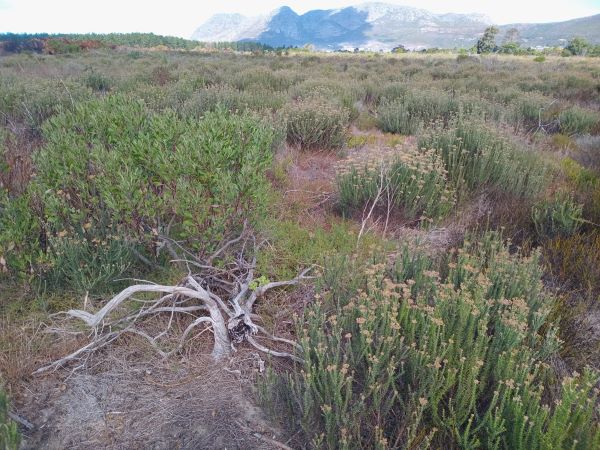 Cape Flats Sand Fynbos at Tokai with Muizenberg mountain in the background on the extreme left. What a long view !
Cape Flats Sand Fynbos at Tokai with Muizenberg mountain in the background on the extreme left. What a long view !The Reserves
I will write something here on reserves where Cape Flats Sand Fynbos is found as the are interesting and locals can use this information to visit and see the vegetation. I have not listed details such as names and phone numbers or opening times as these can get out of date, neither have I listed all the special plants and animals found in the reserves for the sake of brevity. The nature reserves are at Blaauwberg Conservation area, Edith Stephens Wetland Park, Greater Princess Vlei Conservation area, Kenilworth Racecourse Conservation Area, Milnerton Racecourse Nature Reserve, Rondebosch Common Conservation area, Rondevlei Nature Reserve, Tokai Park in the Table Mountain National Park, The University of the Western Cape Nature reserve and Bracken Nature reserve. These reserves are more accessible, while others are not set up to be open to the public, such as parts of Blaauwberg Conservation area and Plattekloof conservation area.
There are some mostly heavily compromised patches in the city. A well known area of fynbos can be found at the Wingfield military base at 6 base ordinance depot, and I've seen small very damaged areas in the loops of the N7/N1 on and off ramps, along Valhalla drive approaching Bishop Lavis, and using google earth one can see what looks like about 600 hectares of wild vegetation on the Cape Town International airport property.
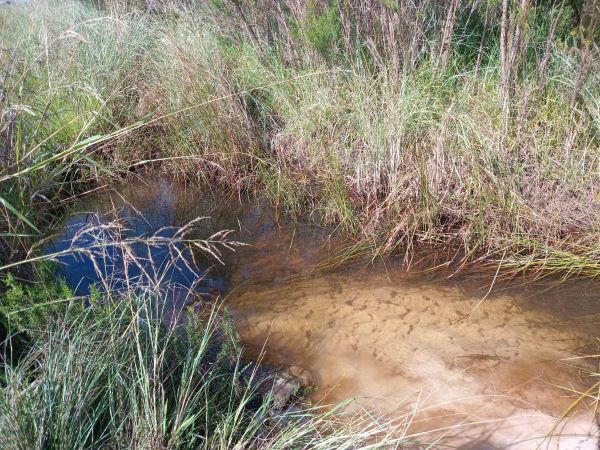 A patch of river at Tokai with that typical tea coloured water full of tannins and pale leached river sand.
A patch of river at Tokai with that typical tea coloured water full of tannins and pale leached river sand.Edith Stephens Wetland Park (Reference 5)
This 39 hectare park was added to a small piece of land donated to the nation by the botanist Edith Stephens to preserve the type population of Isoetes capensis or Cape Quillwort, a spore bearing geophytic plant (Reference 11). The park consists of a large seasonal wetland surrounded by CFSF and Cape Flats Dune Strandveld. It contains 7 red data species and nearly 100 species of birds, many amphibians including the endangered Western Leopard Toad, reptiles and mammals. It is run by a partnership of the city of Cape Town and local residents. There are trails, an education centre, picnic area, bird hide and medicinal garden.
Milnerton Racecourse Nature Reserve (Reference 6)
This reserve consists of the land inside the tracks of the former Milnerton Racecourse and is managed by the city's Environmental Resource Management. Tall aliens were removed as they hid the view of the racehorses and thus it has remained relatively free of invasive alien plants. It consists of two areas separated by an up-market housing development called Royal Ascot. The city owns the nature reserve land and the management is under a commitee consisting of the property owners and the owners of the racecourse. The committee was established as a condition of the rezoning of the land.
Botanists recommended that only the northern portion be open to the public, and to disallow dogs in the area.
The sandy soil overlies a base of ferricrete, and it is one of the last habitats like this. Another was the now degraded Ysterplaat (translated as iron plate) which got its name from the ferricrete layer. It is mainly CFSF with a few elements of Cape Flats Dune Strandveld. There are 232 recorded plant species 12 of which are red data listed. Two perennial wetlands and several small seasonal wetlands support 70 bird species. 10 Lepidoptera species have been recorded. A few small buck remain in the area.
 Fire management at Tokai. The Carpobrotus in the bottom centre is soft and pulpy, cooked through.
Fire management at Tokai. The Carpobrotus in the bottom centre is soft and pulpy, cooked through.Bracken Nature Reserve (Reference 7)
Situated in Brackenfell on 36 hectares of land, on a hill called Kanonkop. The name, translated as 'Cannon hill' dates back to VOC days, when a cannon was placed there to send warning shots to local farmers and suppliers of food when ships approached. This reserve protects both Cape Flats Sand Fynbos and Swartland Granite Renosterveld vegetation. There one can find 160 plant species including a diversity of orchids, succulents, and flowering bulbs and ten highly endangered species, as well as diverse mosses and lichens. The reserve also provides habitat for different small mammals like the Cape Dune mole and mongoose (Reference 13), reptiles, vulnerable amphibians and many birds, including raptors.
The site was once a granite quarry and then a dumping site and is fitted with gas extraction pipes to let methane gases escape, over which local soils from nearby sites was laid.
At the entrance is a garden of native plants. Other attractions include a picnic area, footpaths, a wheelchair friendly trail, bird hides, alien clearing and plant survey activities and lovely views. Entrance is free, but it is only open on weekdays.
A satelite park of 2.2 hectares called Perdekop is nearby. It has enormous diversity and more than 240 plant species have been recorded. There is a short walking trail.
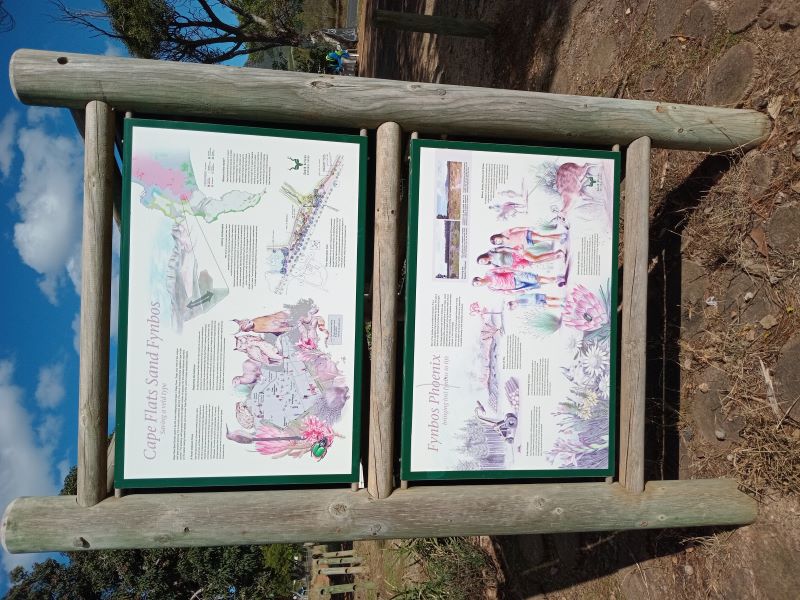
Tokai Park Restoration Project (Reference 8)
The creators of the Tokai Park restoration area are convinced of the necessity of restoration because the conservation goal of 30% for the CFSF is unachievable without it, there being only 10% of the vegetation type remaining, and this under threat from invasive trees and grasses. In fact CFSF is the most threatened vegetation type within the city of Cape Town. Its high number of threatened species have made Tokai park an important core conservation area. 400 species have returned to the park, 2 of which are threatened with extinction.
Previously planted to exotic pines for 100 years, its potential became clear in a 1998 fire after which there was remarkable recovery from the native seed bank. In 2005 SANParks took over management and forestry is contracted to remove all the pines by 2025.
Natural regeneration is the main strategy, with some planting, and a lot of alien clearing. For the natural regeneration, research is being carried out there on restorative fire management, comparing unburned areas with cool and hot fire regimes. Thus far hot fires have shown the most regeneration of diversity, as they diminish invasive grasses and stimulate the seedbanks of aliens so that they can be removed before seeding. However, legal restrictions in urban areas require cool fires at the wrong time of year, and this is perhaps the biggest obstacle to restoration and maintenance.
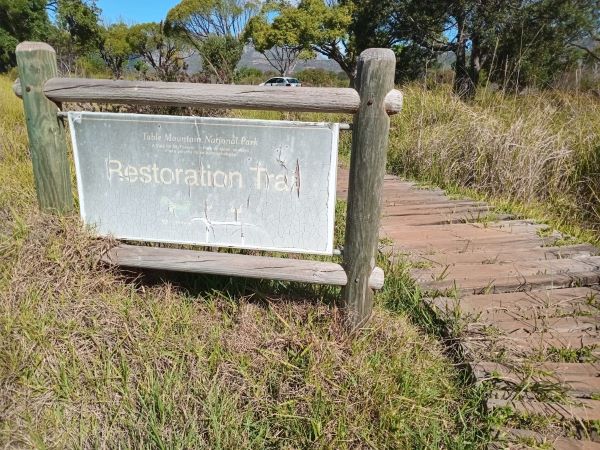 The Tokai restoration trail is has plenty of informative signage, but some funding is needed to replace the sun damaged ones.
The Tokai restoration trail is has plenty of informative signage, but some funding is needed to replace the sun damaged ones.Absent from the seedbanks are resprouting shrubs and canopy stored seed banks, and the management are struggling to replace these with locally collected seed sown after the restorative fires.
The participation of volunteers is essential in the role of recording and monitoring, and a large amount of citizen science driven data has been collected. Volunteers have also done the alien clearing, yet it is still the major expense involved in the restoration.
We did the restoration trail on Sunday with the dogs and it was beautiful. This time of year, after the dry summer and the first bout of rain, there were not many bulbs out. The sugarbushes were flowering beautifully. The veld seemed to be dominated by restios, sugarbush, Chrysanthemoides, Metalasia and Carpobrotus. Along the rives are rushes and tall Psoralea. Elsewhere we could see evidence of some cold and hot fires I believe. In some areas the bushes were browned and in some the thick old trunks of trees charred to the core. In some the carpobrotus was red but still firm, whereas in others it had been cooked to a pulp.
 One of the biggest threats, alien vegetation. Here Kikuyu grass at the end of the bridge shows lurid green. It swamps bushes and smaller plants in a dense blanket.
One of the biggest threats, alien vegetation. Here Kikuyu grass at the end of the bridge shows lurid green. It swamps bushes and smaller plants in a dense blanket.UWC Nature Reserve
This 34 hectare reserve is a national monument. It has a nursery and environmental centre and is a resource for teaching and research. It contains wetland, 10 hectares of CFSF and some Cape Flats Dune Strandveld vegetation. Of the latter vegetation type 51% has disappeared at the Cape and 19% is protected.
The nature reserve unit aims to promote awareness and positive attitudes to the environment, our lowlands vegetation, its ecological processes and biodiversity. It offers school education programmes, a chance for students to reconnect with nature, research opportunities, plant propagation education and indigenous community garden building in the local communities. There are trails, a bird hide and picnic spots and regular indigenous plant sales.
The citizen science involvement is really fantastic. In addition to the weekly photography walks, there are annual bird and faunal walks and survey participation for the public, and I've been on their rodent monitoring walk guided by zoology lecturers, which was fascinating. This also builds up their photographic library, number of recordings and updates species lists. 220 plant species including red data species have been recorded, and some 20 different mammals, from caracal to gerbils, 100 birds as well as reptiles such as the Cape dwarf chameleon and angulate tortoise add to the list.
One of the major threates is contaminated underground water. The reserve is managed with minimal disturbance and continuous weeding and alien removal, especially after fires. There are burning restrictions, as it is in the middle of urban areas, but they are working on a fire management plan.
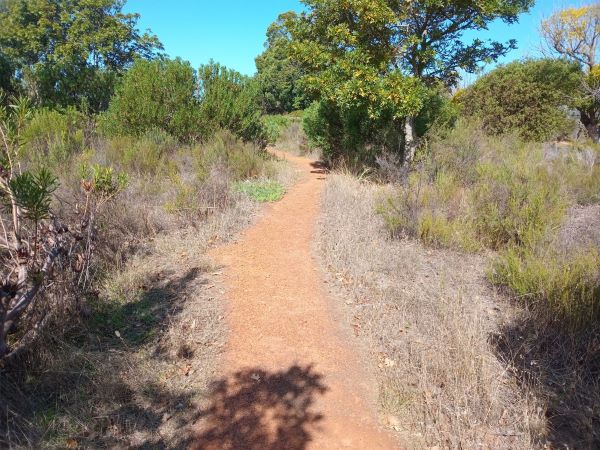 The beautiful meandering warm colour of the restoration trail, paved with red clay gravel because its more resistant to erosion than the native sand.
The beautiful meandering warm colour of the restoration trail, paved with red clay gravel because its more resistant to erosion than the native sand.Blaauwberg Nature Reserve
The reserve houses CFSF, Swartland Shale Renosterveld which is also critically endangered, and Cape Flats Dune Strandveld on its 1445 hectares. 624 plants species have been recorded, 41 mammals, astonishly including the aardvark, 166 birds, 30 reptiles and 4 amphibians.
There is evidence of early human occupation 15000 years ago in the shell middens, and some historical sites to do with the battle of Blaauwberg in 1806 and WW2,
Threats to the area were 4x4's, which drove over the beach and sand dunes, destroying vegetation, bird's nests and shell middens. They have been stopped. Surfing, hiking, wind surfing, kite flying, whale watching and other activities continue.
I've found that some of its extent is not accessible to the public as it is too sensitive. The CFSF areas fall under this strong protection.
Plattekloof Conservation area
This reserve is closed to the public. It is fenced off and runs under the power supply pylons for Cape Town and would make a wonderful biodiversity promoting corridor from De Grendel wine farm on the Tygerberg, through the empty wattle infested Goodwood prison grounds, Wingfield airbase, Maitland cemetery and onto the Elsieskraal river next to Grand West Casino.
Down to the sea !
This river is another potential corridor connecting the Tygerberg to rewilding projects in Pinelands and flowing on to the LIesbeek rewilding and the three rivers wetland area and and the ocean. Recently there used to be a vast estuary at the mouth of the Black River surveyed by my father as a young engineer. He observed that the reed beds and open swamps were alive and filled to bursting with flamingoes and other wild birds. The birds were ringed and counted by my mother as a student and founder member of the Bird Club of South Africa when the waterbird species there were still in their hundreds, and many were migratory and had flown all the way from north Africa and Europe.
What a loss to the whole world was the building of the infrastructure such as harbour extensions for large vessels, the industrial area at Paarden Eiland and the container depot. It seems nearly every attempt to advance mankind has exacted a terrible price on nature. It is only when it comes back to bite us that the powers that be think twice about it, if at all.
But people have been hit brutally hard too in the city's past and present ecological disasters. Recently representatives of the indigenous Khoekhoe people have fought a long bitter losing battle against business park developments right on the bank of the Black river close to its mouth in the middle of the land promised to them by the city as a heritage area and city green belt. The main occupant of the business park is a very large American company. The descendants of the Khoekhoe have little enough left of what once used to be all Khoekhoe country. For their ancestors, the Cape Flats in its beautiful wild state was home, and they have an extraordinary heritage of knowledge about its plants. How sad that many of these medicinal, edible and useful plants adapted to our region and not needing inputs will become extinct if Cape Flats Sand Fynbos goes.
References
- https://resource.capetown.gov.za/documentcentre/Documents/Graphics%20and%20educational%20material/Biodiv_fact_sheet_06_CapeFlatsSandFyn_2011-03.pdf
- https://communitree.in/our-work/projects/the-cape-flats-sand-fynbos-project
- https://assessments.iucnrle.org/assessments/10 frequently cites and is based broadly on Rebelo et al. 2006. but cites a lot of other relevant texts.
- https://en.wikipedia.org/wiki/Cape_Flats_Sand_Fynbos
- https://en.wikipedia.org/wiki/Edith_Stephens_Wetland_Park
- https://en.wikipedia.org/wiki/Milnerton_Racecourse_Nature_Reserve
- https://en.wikipedia.org/wiki/Bracken_Nature_Reserve
- https://tokaipark.com/2020/02/cape-flats-sand-fynbos-a-restoration-story-i/
- https://www.uwc.ac.za/study/all-areas-of-study/units/uwc-nature-reserve-unit/overview
- https://sagrainmag.co.za/2019/07/26/soil-the-producers-most-important-assetpart-25-soil-classification-ii/#:~:text=Podzol%20soils%20develop%20in%20sandy,the%20Western%20and%20eastern%20Cape.
- https://en.wikipedia.org/wiki/Isoetes_capensis
- https://en.wikipedia.org/wiki/Blaauwberg_Conservation_Area
- https://www.fynboslife.com/nature-reserves/bracken-nature-reserve/
- https://sagrainmag.co.za/2019/07/26/soil-the-producers-most-important-assetpart-25-soil-classification-ii/#:~:text=Podzol%20soils%20develop%20in%20sandy,the%20Western%20and%20eastern%20Cape.
- https://soilseries.sc.egov.usda.gov/OSD_Docs/L/LAMOTTE.html
- Compton, J. 2016 The rocks and mountains of Cape Town. Earthspun books
Restore Nature Newsletter
I've been writing for four years now and I would love to hear from you
Please let me know if you have any questions, comments or stories to share on gardening, permaculture, regenerative agriculture, food forests, natural gardening, do nothing gardening, observations about pests and diseases, foraging, dealing with and using weeds constructively, composting and going offgrid.
Your second block of text...
SEARCH
Order the Kindle E-book for the SPECIAL PRICE of only
Prices valid till 30.09.2023
Recent Articles
-
garden for life is a blog about saving the earth one garden at a time
Apr 18, 25 01:18 PM
The garden for life blog has short articles on gardening for biodiversity with native plants and regenerating soil for climate amelioration and nutritious food -
Cape Flats Sand Fynbos, Cape Town's most endangered native vegetation!
Apr 18, 25 10:36 AM
Cape Flats Sand Fynbos, a vegetation type found in the super diverse Cape Fynbos region is threatened by Cape Town's urban development and invasive alien plants -
Geography Research Task
Jan 31, 25 11:37 PM
To whom it may concern My name is Tanyaradzwa Madziwa and I am a matric student at Springfield Convent School. As part of our geography syllabus for this
"How to start a profitable worm business on a shoestring budget
Order a printed copy from "Amazon" at the SPECIAL PRICE of only
or a digital version from the "Kindle" store at the SPECIAL PRICE of only
Prices valid till 30.09.2023
